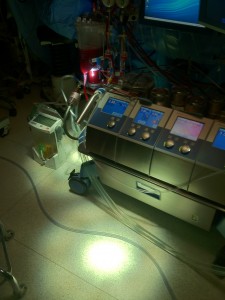This post was written on our first day in simulation at the Mars Desert Research Station. Our two-week mission at MDRS in January 2013 served as preparation for the four-month HI-SEAS mission in April.
We staggered our arrival at the Mars Desert Research Station. Two of us rode in first, hauling gear, riding with a member of the previous crew. Here’s the turnoff, the road has new dirt, watch out for the steep hairpin turn. Two of us waited at Bowl Mountain Market, ate some snacks, asked questions of a different member of Crew 121, got answers. Two of us were still on the way, hauling a robot rover in a Jeep and having stopped back in Grand Junction for supplies needed before we would seal away for two weeks.
The previous crew was prepared to leave by the time some of us arrived at the habitat, but they had to wait, unfortunately. The Crew 121-122 changeover was protracted like this: multiple carloads of people and things, limited vehicles, waiting. Still, while they waited for all of us to assemble, members of Crew 121 proffered encouraging smiles and useful information. Their time at MDRS was good, we learned. They wanted to come back, they said. But a cold front was moving in; they also looked forward to flying home to Florida’s warm sun.
At the the habitat, we learned about critical systems: the propane tank, the water tank, the toilet. We learned about the all-terrain vehicle challenges, the spacesuits tricks, the oven quirks. We learned it would be a cold night. Frigid outside the habitat and brisk on the first floor, but most likely not in our second-floor sleeping quarters. There it would be hot.
We put away lab equipment, inventoried our food stores, and laid out our sleeping bags. We let the one of us who had a vision for it, cook a delicious meal of tuna, pasta, and “surprise.” We ate. Dinner brought us together and filled us with calm.
After cleanup, it was late, and we were exhausted. We agreed to leave the planning and discussing, the writing and making schedules to the next day, the day we would enter “sim” with a finger snap and a yes, now we are on Mars.
We went to bed, and in our rooms we slept under sheets and breathed dry desert air. Some of us dreamt. One of us dreamt the propane tank exploded, a practical joke, apparently, by the previous crew that had gotten out of hand. The blast was big. It was enough to put us on a trajectory to Mars.
In the morning we woke up, safe, sound and refreshed, ready to start the journey.



